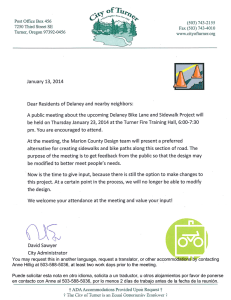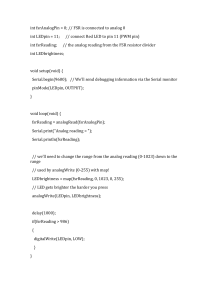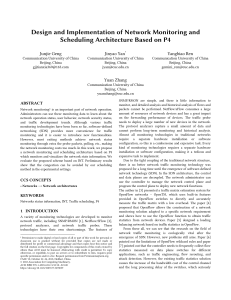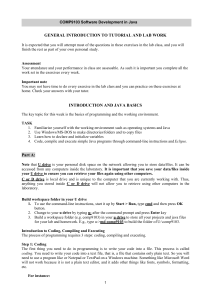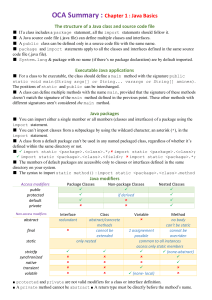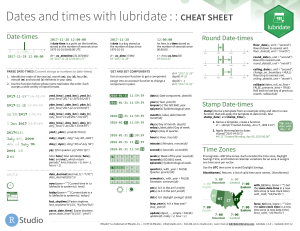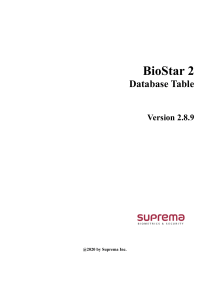Controlling the evacuation of the inhabitants of the Popocatepetl
Anuncio
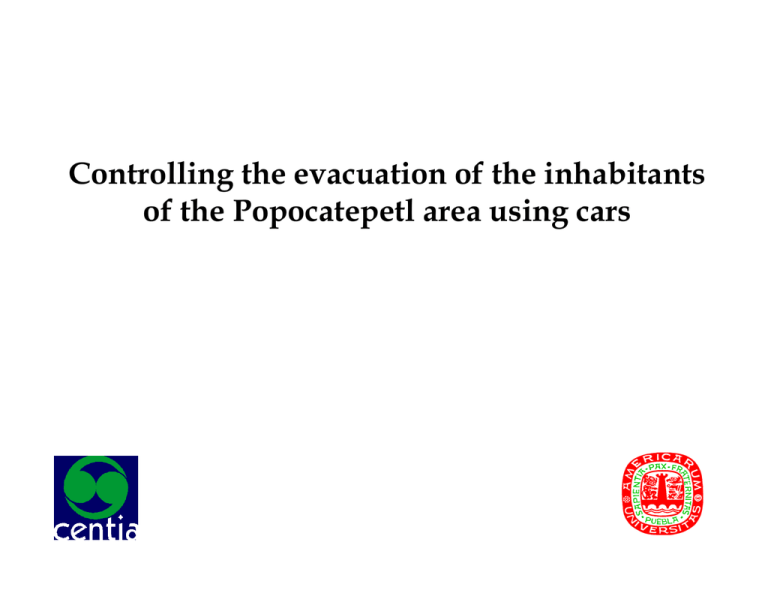
Controlling the evacuation of the inhabitants of the Popocatepetl area using cars 1 CENTIA, Lines of research •Graphics and Image Processing •Mathematics and Algorithms •Digital Libraries •Educational Software •Case Based Reasoning •Speech Recognition •Neural Networks •Robotics •Data Management and Distributed Systems •Digital Cartography www.udlap.mx/~centia www.udlap.mx/~gisudla 2 3 Popocatépetl Volcano Location Popocatépetl Volcano 4 Popocatépetl Volcano • stratum volcano • surface 500 km2 • diameter of the crater 900m • 5452 m height • depth of the crater 150m • states: Puebla, México and Morelos. •Since 1994 repeated active in December 2000 last evacuation • About 60.000 people live in the most dangerous region • People have to be evacuated with busses lorries and private cars on the given street network 5 Emergency Map 6 Digital Map Popocatépetl Zone ArcView Map 7 Aim of the project • Investigation of the given evacuation plans whether bottlenecks (traffic jams) could occur. • Methods of traffic simulation together with optimization methods will be used to ensure that the inhabitants of the dangerous region will be evacuated in shortest possible time. • It is necessary that these methods provide quantitative values of the evacuation time. 8 OpenGIS: Geometries represented 9 Road description 10 Data Model aaaaaaaaaaaaaaaaaaaaaaaaaaaaaaaaaaaaaaaaaaaaa EVACUACIÓN Localidad Información descriptiva Clave_Municipio: Clave_Localidad: Nombre: Altitud: ... 1 1...* 1 int int String int Formada por 1 Cruza 1 Acude Evacuada por Llega a Cruza Formada por aaa 1...* Refugio aa Clave_Refugio: Nombre: Dirección: Capacidad: ... 1 Formado por 1 1 Ruta de Evacuación Clave_Ruta: Color: Clave_Destino: T ipo: int String String int ... 1 Formado por aa 1...* 1...* 1...* Caminos y Carreteras Clave_Carretera: Nombre: Estado: T ipo: Amplitud: Longitud: int int int int 1 aaaaa Identificador: int CoordX: double CoordY: double aaaaa 1…* Polígono Identificador: int Puntos[]: Point Clave_Rio: Nombre: Caudal: Longitud: int String int int float float 1 int String float float 1 Formada por Formada por 1 Punto aa 1...* 1...* Ríos Formado por 1...* 1...* 1...* aaaaaaaaaaaaaaaaaaaaaaaaaaaaaaaaa LineString aaaaaaaaaaaaaa Identificador: int Puntos[]: Point No_Cuerpo: int Polígono Identificador: int Puntos[]: Point 1...* 11 Requirements of this approach • Complete description of the traffic network, including the – turning relations, – speed limits , – kind of the pavement, – one-way streets, – number of lanes. • details of the given evacuation plans like – available cars, – shelter rooms, – number of inhabitants, – evacuation routes. 12 General Architecture 13 What is GML ? GML or Geography Markup Language is an XML based encoding standard for geographic information www.opengis.net/gml/02-069/GML2-12.html GML example 14 Important questions to solve within the project • • • How long it will take to evacuate all inhabitants from the dangerous region maintaining of the given evacuation plans (following the given roads to shelter rooms)? On which roads appear traffic congestions? Is it be possible to reduce the probability of traffic congestions by a time shifted departure of the evacuation fleet from the different villages? What time reduction provides this measure? Could we reduce the evacuation time if instead of the given evacuation routes alternative routes will be chosen? Does it make sense if the fixed assignment of the people to the shelter rooms will be changed? 15 Data Management for Simulation SHP Geo database GML XSLT HTML SVG Simulation 16 Conclusions and Perspective Work Conclusions •Data Set •Data Model •Architecture of Collaboration •Visualization Perspectives •The necessary traffic simulation methods are developed and mostly implemented. • We expect to present final results by the end of this year. •3D Visualization 17 Evacuation Simulation in 3D 18 [email protected] [email protected] 19



